
The design of the battery thermal management system is the decisive external factor that guarantees the safe operation of the battery. It is also the key to improving performance indicators such as battery system life. It is directly related to the ultimate success or failure of the battery system, and can reject the design results by one vote. From the perspective of the thermal design process, there are many related elements, just like finding balance on the fulcrum. The final goal, the result of technical implementation, is to ensure the "comfort" and "average temperature" of all chemical cell working environments in the system. To achieve this, the performance of many batteries can "go in the same direction" and play the best role.
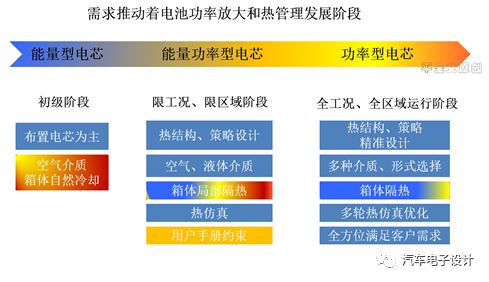
In the early design of the vehicle power battery system, there was no shortage of battery layout. Open the cabinet, full of batteries, the thermal management design is difficult to trace or weakened, not treated as a key link. In recent years, this situation has undergone fundamental changes. Customers are pressing for “reducing the use gap (and fuel vehicles)â€. From the power point of view and environmental adaptability, higher requirements are imposed on the battery system, and thermal management is given New mission. This requires the use of a scientific and complete development process, step by step, and seriously treat each small link, so that the thermal design meets the requirements of the battery system.
1. The entrance based on the positive development of the V model: three key “needsâ€, which can be understood clearly.
In fact, the design of all parts is based on the "demand" design. However, after so many years of design, it has been found that the problem is often the "demand" link. Some problems are vague or ambiguous at the beginning of the design. The result can only be patched afterwards and may even overturn the design. Pay a lot of money. Therefore, at the beginning of the design, we must fully "think clearly", and later work can "make it clear."
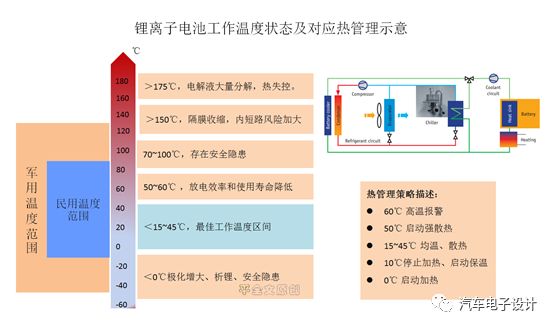
1) One of the key requirements: the application of the "region" is clear, and meeting the environmental requirements is the first.
From a cost perspective, the “full temperature†demand design is not well accepted. The intrinsic properties of the battery NCM, NCA, LFP lithium ion chemical battery temperature adaptability is very narrow, and can only be adjusted by thermal management (as shown). However, there is a problem. The stronger the adaptation environment, the larger the temperature adjustment range, and the greater the technology and cost investment (in the hardware and software part of thermal management). How to weigh this problem? Let me give you a few points:
Measure one, design different versions of thermal management. Although we spare no effort in driving mileage, most vehicles, most customers, still define new energy vehicles as medium-to-short-haul point-to-point vehicles. The operating range is still smaller than the fuel car. For example, if the logistics vehicles used in the southern region cover the demand design of the alpine region, it is obviously unreasonable and uneconomical. Nowadays, the design of “user precise positioning†is also a development trend.
Measure 2, “Notify the customerâ€: For example, in the early version of leaf, there is a user manual: “Do not place the vehicle at a location above 49°C for more than 24 hours; place it at a location above -25°C for more than 7 daysâ€. Any product is designed to meet the needs of most customers. When faced with "minority" customers, a few "conditions". Need to "speak clearly" to the customer. It is also a reasonable approach.
Take action three, start from the root and choose the battery type. For example, LTO batteries, low temperature adaptation can be increased by an order of magnitude. In the case that the power and energy density requirements are not high, it can be tried. (This is not discussed in this article)
2) The second key requirement: battery system power boundary SOP, test the thermal management temperature limit control ability
The forward design of the vehicle, the power demand is very important. Determine the pros and cons of power performance. The power boundary of the battery system is largely determined by the thermal management limit control capability. In general, the first step requires the introduction of vehicle power requirements. The battery system then decomposes the technical indicators, selects the battery core, and selects the thermal management mode. Of course, the battery system is also out of reach. The matching curve with the whole vehicle will not match. At this time, it is necessary to give priority to the safety of the entire vehicle.
The third key requirement: the system temperature difference design goal, mainly reflecting the temperature management ability of thermal management
I always think that this is the essence of thermal management design. Despite the high temperature control capability of thermal management, it solves the problem of safe operation of the battery. However, it reflects the battery performance and life capability, and it is the "system temperature" capability. Tesla <2 °C system temperature difference, in addition to indicating his thermal management capabilities, more critical is the model S, model X 150,000 miles of mileage, most vehicles battery capacity loss of less than 10%. This is the truth.
The average temperature design, more from the thermal structure, cold medium quality, control strategy, is a relatively straight link. In fact, there is another important link that is easily overlooked. Which is the “insulation†design (structural material, control strategy). Insulation measures are the most effective way to change the slope of temperature changes. On the one hand, the heat management at high temperatures is cooled faster (reducing the external environmental impact). On the one hand, when the environment is cold, the vehicles that are stopped are slowed down. This brings convenience to the user and also makes the thermal management design with an ambient temperature slightly below 0 °C simplified and easy.
2, can not ignore one of the key elements: the heat transfer of the cell body is not as good as imagined, the system temperature point layout needs to be calibrated
Whether it is a cylindrical battery, a square battery or a soft battery, it is made up of multi-layer pole pieces. Such as a brand of square batteries, 45Ah, consisting of 23 positive electrodes + 24 negative electrodes + N diaphragm + several electrolytes. Let us first look at the thermal conductivity (thermal conductivity) of the relevant materials as shown in the figure:

(Note: The data in the table may be different due to the test method, only for reference)
From the material point of the table, the cell composition and the metal material are very different. That is to say, the temperature of the surface of the battery is transferred to the innermost layer for a long time. More importantly, the temperature uniformity characteristics will become very poor. From the perspective of battery processing technology, there are more differences affecting heat transfer and temperature uniformity:
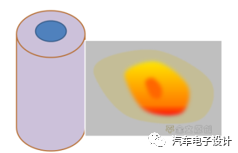
One: there is a temperature difference between the same pole piece (due to the coating thickness process)
Second: the lamination process has different heat transfer paths (the winding process conducts heat along the direction of the platinum sheet, and the heat transfer of the lamination is along the vertical direction of the laminate.)
Third: the temperature of the polar ear does not completely represent the highest temperature in the center of the pole piece. (The poles are connected to the pole pieces through the connecting piece, and the process and materials are different).
Through the above analysis and comparison, the temperature point collection arrangement on the single cell is uncertain. At the same time, the modules and packages composed of individual cells are completely different due to differences in structural design and arrangement. The layout of the temperature point needs to be completed by calibration. For example, the Leaf battery system has 4 collection points distributed in different positions of the cabinet. Nissan is very confident in terms of the number of collections. But behind it, how many rounds of experiments have been completed, and the hard work of this development is not known.
Can not ignore the key elements of the two thermal interface material application selection
In the figure, 1345 is related to heat.
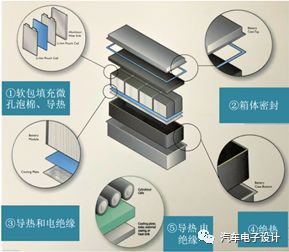
1) Used in the role of the battery 1: heat conduction, heat insulation. It sounds like some contradiction. we
In the application, it is indeed free on the edge of its contradiction. In normal operation, charging and discharging process
In the middle, we hope that its thermal conductivity is good. In this way, the temperature uniformity of the system can be guaranteed. When it happens
Faults, such as short circuit, thermal runaway, we also want to be insulated, so that adjacent cells are protected from the strain.
2) When used between the battery and the heat-conducting plate 3, we not only require good thermal conductivity, but also need uniform heat conduction and good insulation. This is also a contradiction. From the material point of view, the thermal conductivity and material insulation are tilted due to the added ingredients. Below the interface material data, you can see some of the material selection characteristics. for reference only.
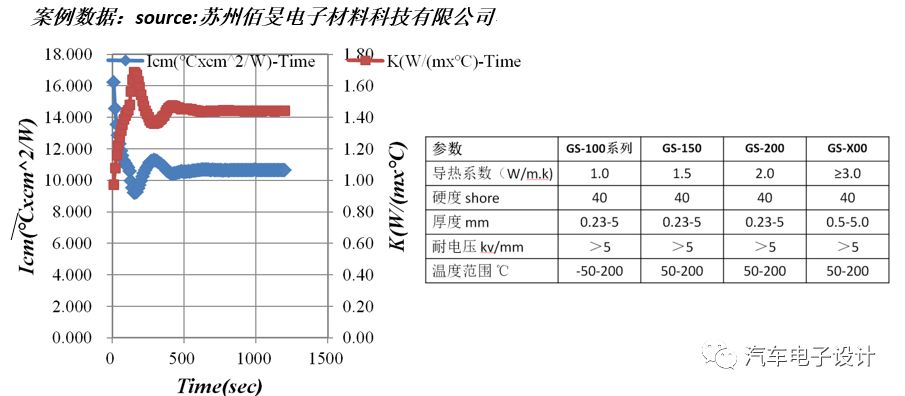
Case data: source: Suzhou Hao Electronic Materials Technology Co., Ltd.
In addition to the above-mentioned options for correlating thermal and electrical properties, there is also a structural choice. During the charging and discharging process, the cell will have a certain expansion. At this time, it is necessary to absorb this variable structurally. The interface material naturally plays a role of "buffering". In short, the accessories are small and have a great effect. Need a good "choice design". In addition, there is a "choice", which is the choice of the brand. At present, the quality of the market is mixed, and some bad products are lured with ultra-low prices. Do not lose because of small. I have witnessed the case of a rework of a small piece of thermal pad. Choose a product manufacturer, focus on its experimental capabilities, and speak with real data.
Partial insulation of the three system cabinets that cannot be ignored
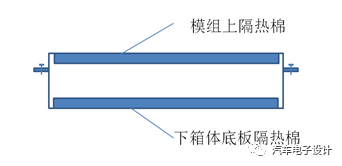
For the design of the water cooling system, we have made some insulation design in the local. The main function of the insulation of the lower floor is to prevent high temperature radiation heat transfer from the ground. The above insulation cotton mainly blocks the heat transfer of the battery system to the body or the cabin. From the perspective of safety, the heat insulation effect is also very large. Once the battery system malfunctions, it can relieve and protect the passenger compartment. At present, the cabinet can not be completely insulated, for many reasons. However, the precise design of the heat of the battery system is correct. Thermal insulation design will also be required.
Don't ignore the four key elements: a naturally cooled battery system that also requires thermal management design elements
Many times, we believe that natural cooling relies on cabinet cooling and no active design elements. It seems that this view needs to be revised.
1) Diversion channel of the airflow of the outer casing of the battery system
I have discussed this with many experienced structural engineers. They very much agree with this. When the battery charge and discharge rate is 1-2C, the ambient temperature is also used to meet the demand. It is reasonable to use natural cooling. With this cooling, the cabinet naturally becomes a "heat sink". When the vehicle moves, the shape of the box is designed to guide the airflow; the gap between the battery box and the body is also required.
2) Floor area ratio of battery arrangement
This can be understood by everyone. When natural cooling is used, the spacing between the cells is increased. From the point of view of natural convection, the cell gap can be 5~10mm to form an effective channel. At the same time, there is a large convection channel between the modules and between the modules and the cabinet. I have done an analysis, the void volume ratio is 40~50%, and natural cooling is the most effective.
summary
This article describes a little experience at work. In the process of thermal design, there are actually two crucial factors: one is “understanding chemical batteriesâ€. Many engineers who do thermal design and thermal simulation are transformed from other fields. This interdisciplinary "understanding" is something that needs to be learned. Only rooted in your ideas, can you realize that thermal system design is not just about controlling high temperature or low temperature, it is just a small step in your design, and the “average temperature†of the system is yours. The ability. Another key is “the thermal model of the batteryâ€, a concept that has been proposed for many years. Everyone is doing it silently. My understanding is not enough to do, and the data is not full enough. This article is not described, and will be left for thematic discussion later.
The above introduction only points out the “step-by-step†required for positive thermal design; it is necessary to dissolve many elements into it, starting with “clear requirements†and making the thermal design clear. At the same time, the "key" elements are designed to be full and complete. Through continuous efforts, we believe that we can design first-class products.
Tobacco control has been a common global concern, while the traditional tobacco industry gradually, new tobacco has become the new strategic layout of tobacco giants. In this context, the emergence of e-cigarettes has further led to the replacement of traditional tobacco. At present, there are already a thousand different types of e-cigarettes, which have undergone several stages of development. The e-cigarette we are introducing today is the CBD pod systewm, a new type of e-cigarette. In this article we will combine the characteristics of the CBD with a brief analysis of it.
·Anti-anxiety
According to scientific studies,CBD can help depressed patients reduce their anxiety. The use of CBD can help maintain endogenous cannabinoids at a reasonable level, making the patient feel good and happy physically, and without any dependence.
·Anti-ageing
CBD is very powerful in anti-ageing. As a non-psychoactive component of the cannabis plant CBD inhibits the glutamate toxic response of cortical neurons and suppresses excessive oxidative stress, helping the body to achieve anti-ageing effects.
·Anti-inflammatory
CBD reduces the free radicals that cause neurodegenerative diseases and reduces swelling through its anti-inflammatory effects. In addition, CBD stimulates appetite and relieves pain.
China Disposble Vape Pen,E-Cigarette Cbd Vaporizer,Best Disposable Cbd Vape Pen,Disposable Cbd Vape
Shenzhen MASON VAP Technology Co., Ltd. , https://www.e-cigarettefactory.com